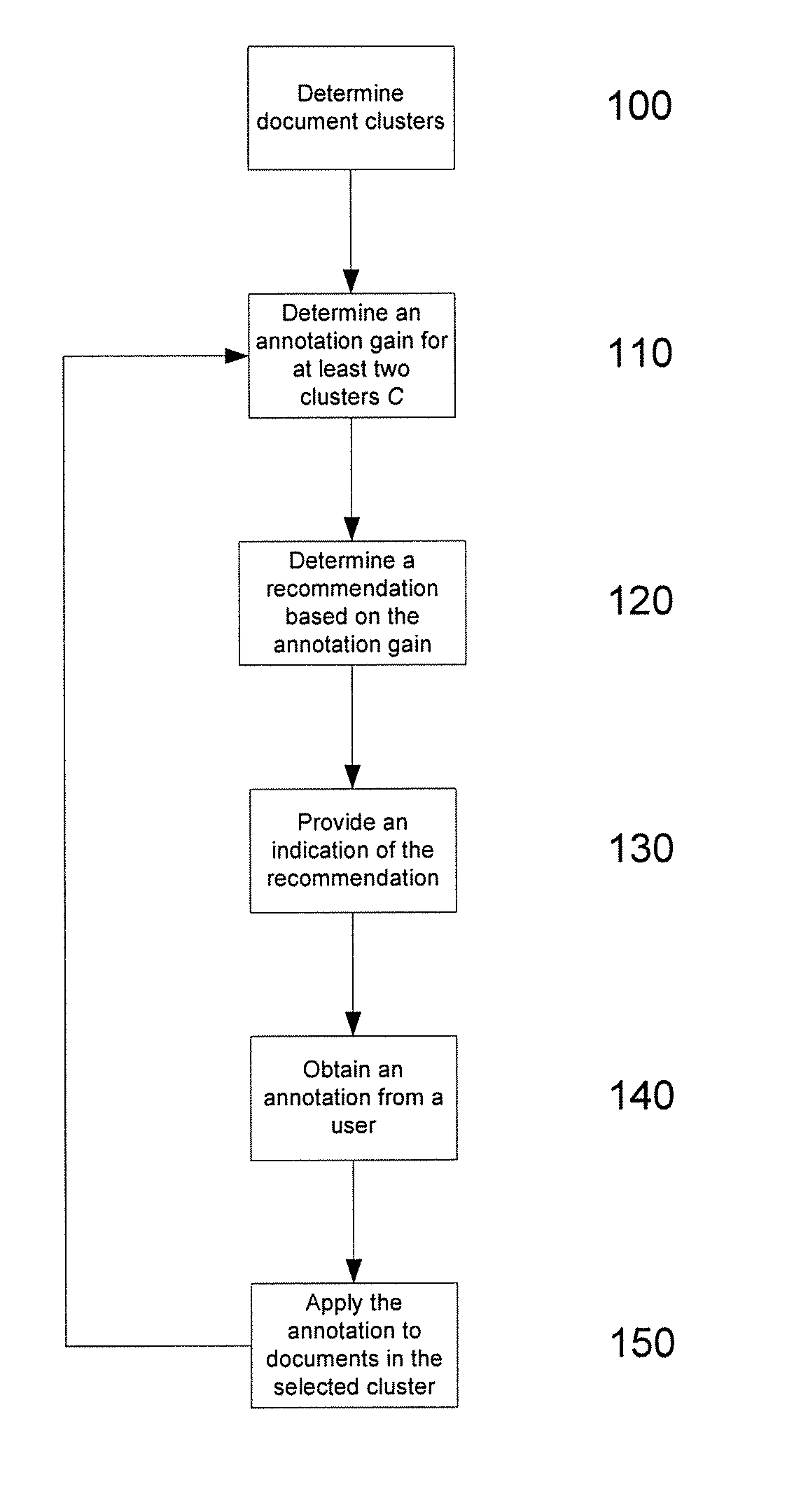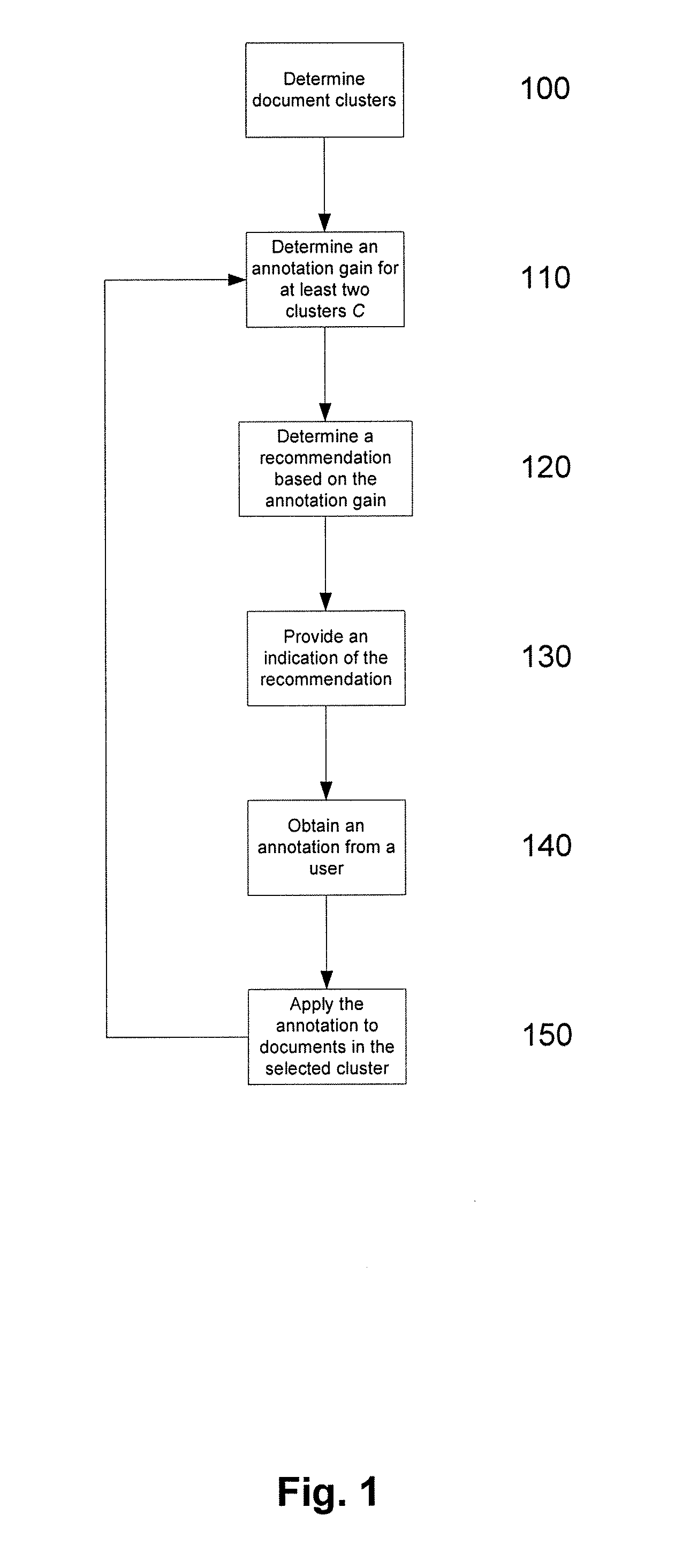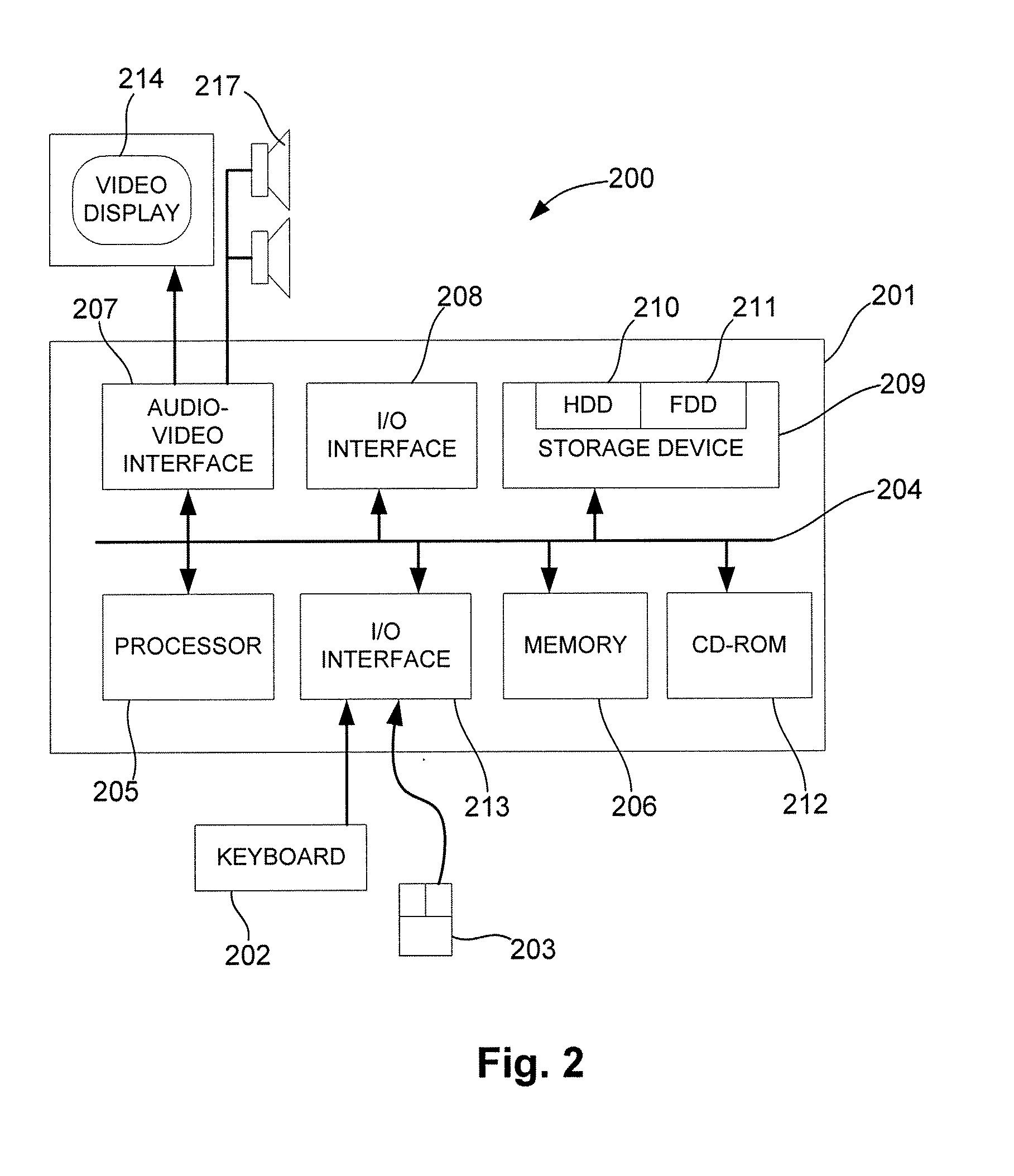Document annotation and interface
- Summary
- Abstract
- Description
- Claims
- Application Information
AI Technical Summary
Benefits of technology
Problems solved by technology
Method used
Image
Examples
specific example
[0097] A specific example of the process for determining an annotation recommendation using the computer system 200 will now be described with more detail with respect to FIGS. 3A to 3C.
[0098] At step 300 a manageable size variable m is selected. The manageable size variable m is selected to represent a manageable number of documents for annotation. This is used to measure the effectiveness of an annotation, with the annotation being more effective the closer the number of documents that share an annotation is to m.
[0099] The manageable number will depend on the context in which the annotations are to be used. Consequently, the value of m may be a factory setting, say 12 documents or 10% of the total number of documents in the collection, or it may be set by a user or the computer system, depending on factors such as the number of documents that can be displayed on a GUI, a number of documents that may be printed on a piece of paper, the resolution of the computer system display 2...
PUM
 Login to View More
Login to View More Abstract
Description
Claims
Application Information
 Login to View More
Login to View More - R&D
- Intellectual Property
- Life Sciences
- Materials
- Tech Scout
- Unparalleled Data Quality
- Higher Quality Content
- 60% Fewer Hallucinations
Browse by: Latest US Patents, China's latest patents, Technical Efficacy Thesaurus, Application Domain, Technology Topic, Popular Technical Reports.
© 2025 PatSnap. All rights reserved.Legal|Privacy policy|Modern Slavery Act Transparency Statement|Sitemap|About US| Contact US: help@patsnap.com



